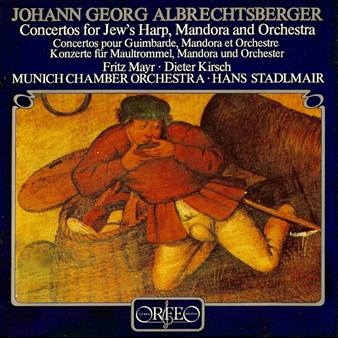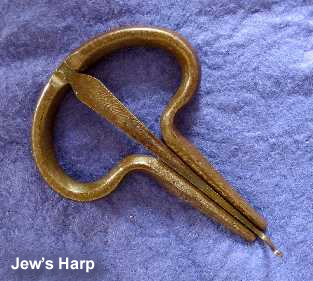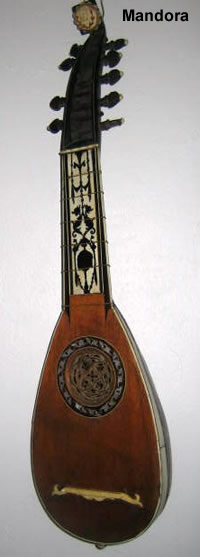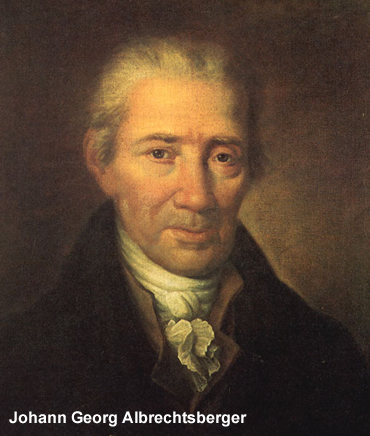 Johann Georg Albrechtsberger (1736-1809)
Johann Georg Albrechtsberger (1736-1809)
Concerto for Jew’s Harp, Mandora and Orchestra in E Major
Concerto for Jew’s Harp, Mandora and Orchestra in F Major
Munich Chamber Orchestra – Hans Stadlmair (Orfeo)
Recorded July 31, 1984 – Studio II des Bayerischen Rundfunks – Munich
ONE SENTENCE REVIEW:
Finally, a Jew’s Harp concerto worth listening to.
ORIGINAL LINER NOTES (including same spelling and grammar) (by Dieter Kirsch):
For many music-lovers this recording may come as something of a surprise. It is certainly a curiosity.
Who would have thought that a “common folk instrument” like the Jew’s harp (or Guimbard) had had classical concertos written for it, and by Beethoven’s teacher of composition at that!
And what is a mandora anyway?
 A glance at the history of the Jew’s harp will soon make us realize, however, that here we are dealing with an instrument of long and venerable lineage.
A glance at the history of the Jew’s harp will soon make us realize, however, that here we are dealing with an instrument of long and venerable lineage.
Old surviving specimens, pictures, sculptures that this is one of the most ancient and widespread of all musical instruments.
During the 19th century in Europe it even enjoyed a brief heyday outside the confines of folk music, with its own virtuoso exponents and repertoire of written works.
No other musical instrument has borne so many different names: in English Jew’s harp or Jew’s trump (origin of name unknown), in German Maultrommel (“mouth drum”) or Brummeisen (“buzzing-iron”), in Latin Crembalum, in Italian Aura (“breeze” or “breath”) and Harmonica or, again as in the poem by the minnesinger Friedrich von Hausen, “Summer” (“buzzer” or “vibrator”). This later reference would appear to be the earliest written evidence of the Jew’s harp in Europe.
From the 14th century onwards there are numerous pictorial representations of the instrument, showing it mainly in the hands of simple peasant folk but also occasionally in more august surroundings.
The cultural movement most fascinated by the sound of this strange instrument was that of the German Romantics.
After the 1800 we find more and more reports of travelling virtuosi (Kunert, Koch, Eulenstein) who were able to play on up to 16 different instruments and also in two parts. Several of the Romantic poets and novelists were so moved on hearing these excellent artists that they immortalized the instrument in their writings (e.g., Jean Paul in his novel “Hesperus”).
Justinus Kerner, the Swabian poet, physician, occultist and player of the Jew’s harp, wrote of his instrument: “Fortissimo and piano dolce can be expressed on the Jew’s harp most magnificently, and it is excellently suited for playing fantasies of one’s own; suited to convey outpourings of pure feeling in tones from better worlds, as the Aeolian harp conveys the feeling of Spring or a starry night.”
 The name mandora has cropped up several times during the course of musical history.
The name mandora has cropped up several times during the course of musical history.
Although the mandora of the Middle Ages is quite a different instrument from the 18th century mandora, they have one thing in common: they are both “little sisters” of the lute.
The mandora for which Albrechtsberger wrote his concerto with Jew’s harp is described in his textbook on composition (1790) under the heading “percussion instruments” as being “A small kind of lute, played in just the same manner, but tuned differently. It has only eight courses made of sheep’s gut.”
The lower four courses (pairs of strings) were tuned differently each time according to the key in which the piece was to be played. The simplification of the instrument in this way (the lute proper is an extremely difficult instrument to play) naturally results in a corresponding lack of musical substance: the player is often merely required to strum a few basic accompaniment patterns.
The similarities to the classic guitar are obvious. It is not surprising that the mandora had its greatest following among those groups of people who wanted to enjoy some convivial music-making without having too many technical demands made on them. Hence the reason why most of the surviving copies of music for mandora have been found in monastery libraries.
The history of the concerto recorded here can likewise be traced back to a monastery. In 1765, returning from his coronation in Frankfurt, Joseph II sojourned at Melk Priory.
Here he heard Father Bruno Glatzl, renowned for his virtuosity on the Jew’s harp. In the prior’s diary we can read: “lusit coram Majestatibus on two Jew’s harps. Namely, he played the Primus and the Secundus both at once, making from the notes minuets, concertos and a thousand other fine artistic things…”
A mandora provided the accompaniment.
 At the time a Melk Priory scholar whose duty it was to play the organ on such festive occasions, Albrechtsberger is sure to have been present. His proficiency as an organist finally took Albrechtsberger to Vienna, where in the years that followed he composed his concertos for Jew’s harp, mandora and strings.
At the time a Melk Priory scholar whose duty it was to play the organ on such festive occasions, Albrechtsberger is sure to have been present. His proficiency as an organist finally took Albrechtsberger to Vienna, where in the years that followed he composed his concertos for Jew’s harp, mandora and strings.
Judging from the numberings, Albrechtsberger must have written at least seven such concertos.
Three of them have survived, those composed in the years 1976, 1770 and 1771, and are preserved today in the Budapest National Library Szechenyi (Ms.mus 2551-2553).
All the “concerti” are autographed and prescribe the use of several Jew’s harps functioning at different pitches, whereas for the lower part Albrechtsberger employs letters without indicating exactly which octave pitch is intended. In the case of the E major concerto there exists a handwritten “viola prima” part, which, as it includes all the chief melodic material of the mandora part, is obviously intended as an alternative to this. (Dieter Kirsch – Translation: Avril Watts).
TRACK LISTING:
- Concerto for Jew’s Harp, Mandora and Orchestra in E major
- Concerto for Jew’s Harp, Mandora and Orchestra in F major
FINAL THOUGHTS:
If you can own only one Jew’s harp recording, make it this one!
 Emily Sachs – President – Manka Music Group (A division of Manka Bros. Studios – The World’s Largest Media Company)
Emily Sachs – President – Manka Music Group (A division of Manka Bros. Studios – The World’s Largest Media Company)



I must find and buy this concerto! Thanks Emily. Really am stunned that anyone would take the time to compose something like this!
That is great, Adrian. I know it’s a bizarre concerto but definitely rewarding… and for a dollar – what a bargain!
This blog post was exactly what I was searching for! It addressed all the questions I had in a concise and helpful way.